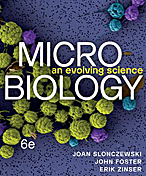Sheep's wool
Introduction
Sheep (Ovis aries) have been selectively bred to continuously produce single coated wool fleece rather than coats composed of an outer hair layer and an inner wool layer.[1] True wool, as opposed to hair, is characterised by its high follicle density in the skin, small diameter, and high crimp [2]
The single woolly coat is recessive trait caused by the insertion of an antisense EIF2S2 retrogene[3] into the 3′ untranslated region of the IRF2BP2 gene.[4] This gene mutation creates a chimeric IRF2BP2/asEIF2S2 RNA transcript that targets the genuine sense EIF2S2 mRNA and creates EIF2S2 dsRNA that regulates the production of EIF2S2 protein [4]. The difference is visible in lamb's wool, where a woolly lamb has visible curls and a hairy lamb has of a wave pattern.
Wool structure
All hair and wool fibers are composed of an cuticle layer of overlapping cells wrapped around a cortex. Coarse wools and many animal fibers also contain a medulla consisting of empty vacuoles.
Wool has a cuticle layer that is only one cell thick, while human hair, for example, has a cuticle layer up to 10 cells thick. Wool cuticle cells also have a wedge-shaped shaped cross-section as opposed to rectangular, so the exposed edge height of wool cuticle cells is about 1 um as opposed to < 0.5 um in other animal fibers.[5]
Wool cortexes typically have a well defined well defined bilateral segmentation of para-cortical and ortho-cortical cells. Because of this, wool’s crimp has been attributed to its cortex structure.[5][6] However, further research has disproved the association between para and ortho-cuticle cell distribution. [6][7] Crimp is actually caused by the differences in length between para- and otho-cuticle cells.[8]
Microbial interactions with wool
References
- ↑ Ryder M. A survey of European primitive breeds of sheep. Ann Genet Sel Anim. 1981;13(4):381-418. doi:10.1186/1297-9686-13-4-38
- ↑ Doyle EK, Preston JWV, McGregor BA, Hynd PI. The science behind the wool industry. The importance and value of wool production from sheep. Anim Front. 2021;11(2):15-23. Published 2021 May 17. doi:10.1093/af/vfab005
- ↑ Staszak K, Makałowska I. Cancer, Retrogenes, and Evolution. Life (Basel). 2021;11(1):72. Published 2021 Jan 19. doi:10.3390/life11010072
- ↑ 4.0 4.1 Demars J, Cano M, Drouilhet L, et al. Genome-Wide Identification of the Mutation Underlying Fleece Variation and Discriminating Ancestral Hairy Species from Modern Woolly Sheep. Mol Biol Evol. 2017;34(7):1722-1729. doi:10.1093/molbev/msx114
- ↑ Wortmann, F.-J. (2009). The structure and properties of wool and hair fibres. Handbook of Textile Fibre Structure, 108–145. doi:10.1533/9781845697310.1.1
- ↑ Hynd PI, Edwards NM, Hebart M, McDowall M, Clark S. Wool fibre crimp is determined by mitotic asymmetry and position of final keratinisation and not ortho- and para-cortical cell segmentation. Animal. 2009;3(6):838-843. doi:10.1017/S1751731109003966
- ↑ Harland DP, Vernon JA, Woods JL, et al. Intrinsic curvature in wool fibres is determined by the relative length of orthocortical and paracortical cells. J Exp Biol. 2018;221(Pt 6):jeb172312. Published 2018 Mar 22. doi:10.1242/jeb.172312
- ↑ Harland DP, Vernon JA, Woods JL, et al. Intrinsic curvature in wool fibres is determined by the relative length of orthocortical and paracortical cells. J Exp Biol. 2018;221(Pt 6):jeb172312. Published 2018 Mar 22. doi:10.1242/jeb.172312
Edited by Isaac Yu, student of Joan Slonczewski for BIOL 116, 2024, Kenyon College.


